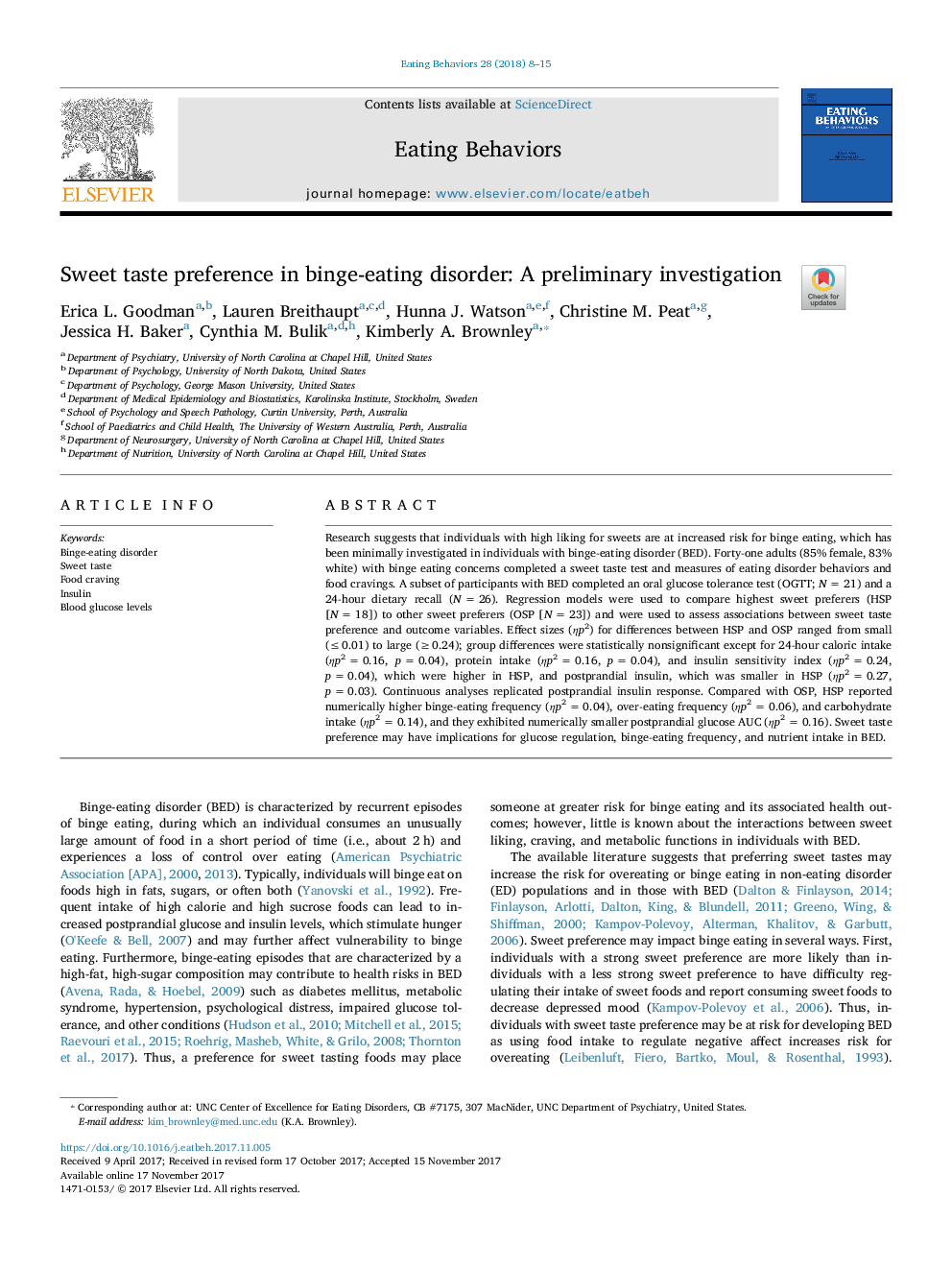ترجمه فارسی عنوان مقاله
اولویت طعم شیرین در اختلال خوردن غذا: یک مطالعه اولیه
عنوان انگلیسی
Sweet taste preference in binge-eating disorder: A preliminary investigation
| کد مقاله | سال انتشار | تعداد صفحات مقاله انگلیسی |
|---|---|---|
| 116215 | 2018 | 8 صفحه PDF |
منبع

Publisher : Elsevier - Science Direct (الزویر - ساینس دایرکت)
Journal : Eating Behaviors, Volume 28, January 2018, Pages 8-15
ترجمه کلمات کلیدی
اختلال در خوردن غذا، طعم شیرین، اشتیاق غذایی، انسولین، سطح قند خون،
کلمات کلیدی انگلیسی
Binge-eating disorder; Sweet taste; Food craving; Insulin; Blood glucose levels;

